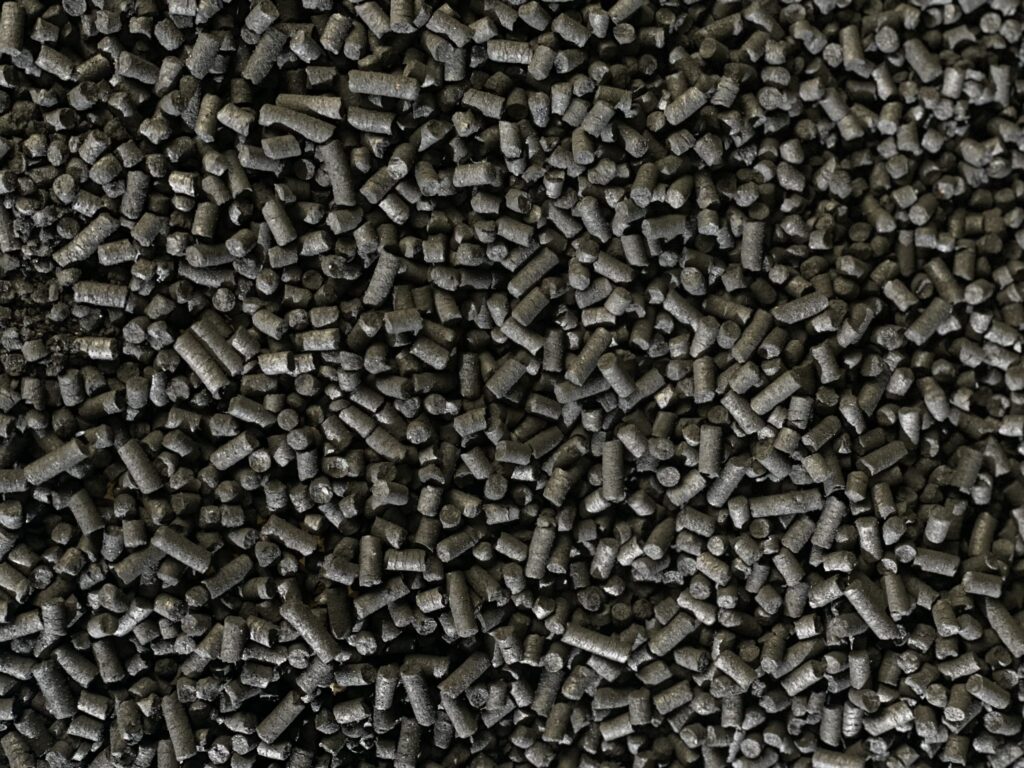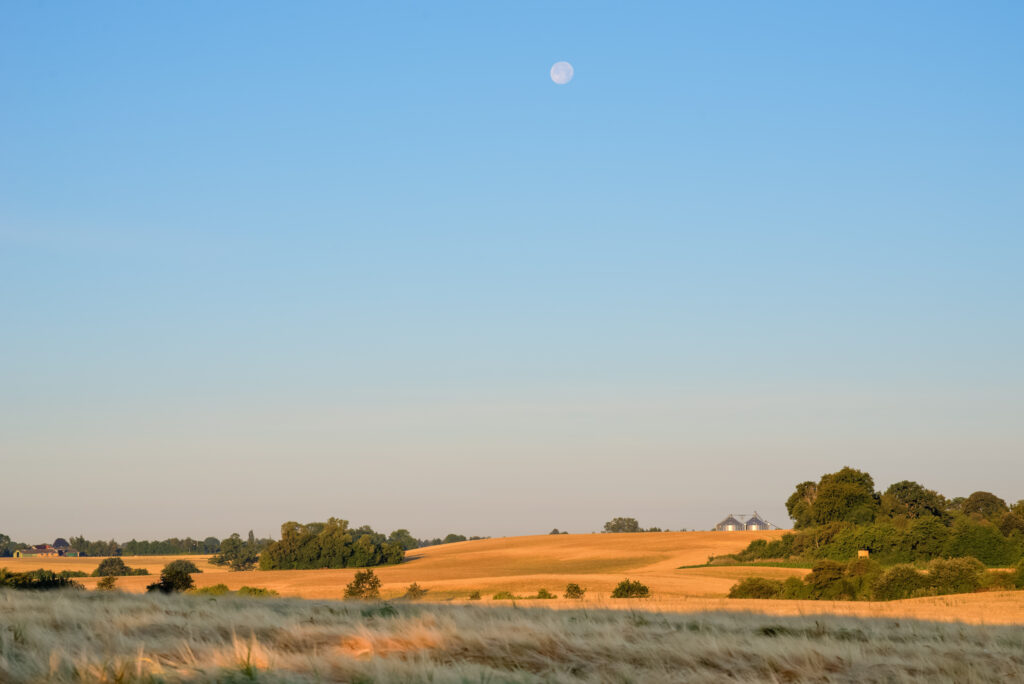Huge potential for CO2 storage with biochar

Interview
Work on developing pyrolysis to store CO2 in biochar has been ongoing for more than a decade. The results are extremely promising. Now there is a need to test biochar in realistic large-scale trials in parallel with further development of the technology, says Professor Lars Elsgaard from Aarhus University.
When you talk about CCS (carbon capture and storage), many people think of technical installations with chimneys or storage in mines underground. However, equally promising methods that use well-known and relatively simple technology also look as if they will be able to store large amounts of CO2. Not least biochar.
In principle, biochar resembles the charcoal and briquettes we have used on our garden terraces for so many years before gas barbeques became popular. Refining the method, and ploughing the coal into the soil instead of burning it, could store around two million tonnes of CO2 annually. That is almost one-third of the CO2 reductions Danish agriculture has to deliver under the Agreement on Agriculture of autumn 2021.
Professor Lars Elsgaard from the Department of Agroecology at Aarhus University has been researching biochar for around ten years. He sees great potential, but he also points to the need to test the technology at a larger scale.
We’ve been working on the technology for 10-15 years. We can definitely bind large amounts of CO2, and it’ll stay bound up for many years. However, there are still a great many uncertainties to clear up. We need more large-scale trials in particular, he says.
But before we look at the challenges and potentials, let’s go back to the first part of the biochar story, and ask Lars Elsgaard to explain the basic technique.
When biomass is heated to more than 500 degrees centigrade without oxygen, it will carbonise. The process is called pyrolysis.
The biomass can be straw, livestock manure, sewage sludge from treatment plants or residual fibres from biogas plants. Around half of the carbon in the biomass will be bound in the biochar coming out of the pyrolysis process. The rest of the carbon will be bound in the other products from pyrolysis: gas and oil.
Biochar stores carbon very effectively
From a climate perspective, the advantage of biochar is that it seals the carbon very tightly.
In biochar, the carbon is much more out of reach for micro-organisms than it is in the biomass before pyrolysis. When you spread straw or livestock manure or other types of biomass on fields, it rapidly decomposes, and the carbon is released into the atmosphere again as CO2. This doesn’t happen to the same degree with biochar, says Lars Elsgaard.
In principle, you can produce biochar from all types of biomass. It can also be produced from garden/park waste or wood chips from forestry, which is frequently used in countries such as Sweden and Finland.
Looking at the biomass available, there’ll be a hierarchy, so we don’t make biochar out of biomass that can benefit in other places, stresses Professor Lars Elsgaard.
Although some biomass is in high demand, such as straw for insulation in construction, other types of biomass are not in such high demand.
We have to look more closely at Danish biomass flows. For example, straw is in high demand. However residue fibres from biogas plants are in less demand, says Lars Elsgaard.
Biochar binds both carbon and nitrogen, making it non-bioaccessible. On the other hand, the soil could remove the phosphorus bound in biochar, not least if the biochar is made from residual fibres from biogas plants. Therefore, biochar can be used to redistribute phosphorus. There is plenty of phosphorus in Jutland, while the soil in eastern Denmark often lacks phosphorus.

Organic farmer among the pioneers
Lars Elsgaard sees no immediate challenges in the scale. If you spread 10 tonnes of biochar on a hectare, it’s important to remember that there are already 3,000 tonnes of soil per hectare of land.
While biochar can add phosphorus and potassium to the soil, nitrogen is bound very tightly, so the plants get no benefit from the nitrogen in the biochar.
When the pioneers started their first trials with biochar around 15 years ago, their primary goal was to improve the soil.
Thomas Harttung, the founder of the food business Aarstiderne, was not only at the leading edge of the concept of meal boxes. He was also one of the first in Denmark to work with biochar.
An article in the journal Forskning i Bioenergi back in December 2008 described how the eco-company Aarstiderne had inaugurated an advanced gasification plant to produce a special type of coke, today called biochar, that Aarstiderne would use to improve soil fertility.
If you ask Lars Elsgaard about the fertiliser value of biochar, his immediate reply is mostly negative – but not entirely.
So far, there’s nothing to suggest that biochar has a positive effect on crop yields. But you have to take into account that Danish agricultural land is very well-run. Danish farmers add fertilizer and lime when necessary. In other parts of the world, biochar may well serve to add lime and have a positive effect on yields in very sandy soils, for example, says Lars Elsgaard.
The big question is time
The big question is how long the biochar will bind the carbon.
We already know that the carbon is released very slowly, but we don’t know exactly how much CO2 will be bound in the biochar after 70, 80 and 100 years. We don’t have to wait that long to find out, because we have models that can predict the carbon release within an interval. However, it’s clearly an area we need to find out more about, says Lars Elsgaard.
And actually biochar is not just biochar, he stresses.
There are a lot of variables. The type of biomass can vary, the temperature in the pyrolysis process can be from 500OC degrees up to 900OC, and the type and size of the biochar can vary.
Biochar is not a uniform product. There’s no point in documenting the effects of biochar made from maize if the biochar we primarily end up using is made from residual fibres from biogas plants or sewage sludge. We have to clarify what types of biochar have the largest potentials, and we need specific trials with these types to document precisely their effects, says Lars Elsgaard.
We need to know more about the carbon binding and how the biochar affects soil conditions on the fields on which it is spread.
We need to learn more about the effects of biochar on crops’ uptake of nutrients and on crop yields. There is a need for large-scale trials. Right now, we have plots of around 20 by 20 metres, but when you move soil all the time, you can’t be sure that your results fully correspond to normal farming conditions. Therefore, we need longer trials on larger areas to provide greater certainty, says Lars Elsgaard.
Environmental impacts are another area for closer examination.
If you use sludge from wastewater treatment plants, the biochar will inherit some of the problems of this biomass, for example heavy metals.
There may be large concentrations in biochar. But we won’t be creating a new environmental problem. It’s already a well-known issue, and today organic farmers aren’t allowed to use sludge from wastewater treatment plants. In our context, it’s more about examining how biochar acts in different soil conditions, says Lars Elsgaard.
He stresses that it is not a major issue. The greatest environmental challenge is probably that, during pyrolysis, there is a risk of forming environmentally harmful tar compounds, the so-called PAHs.
Here, it is primarily about managing the process. With the right process and the right temperatures, it is possible to limit the tar substances, says Lars Elsgaard.
Seeking more knowledge and regulation
Despite 10-15 years of trials and research with promising results, the use of biochar has yet to move beyond the test stage. According to Lars Elsgaard, this is because of two factors. Knowledge and regulation.
Research results have not yet reached consultants and farmers. A major task for the future is to document and communicate the benefits.
And if a farmer has actually heard about the positive effects of biochar, where is he to get it from? asks Lars Elsgaard. Large installations to manufacture biochar in Denmark haven’t even been planned until recently.
He says that a European certification body already exists, the European Biochar Certificate, and this has set limit values for the contents of biochar. In his opinion, Denmark needs an executive order on biochar similar to the existing Sludge Executive Order or the Waste and Soil Executive Order.
If farmers want to spread biochar on their fields, they can’t just go ahead and do it. You have to apply for permission and have a special permit. There’s a need to simplify a number of standard regulations, says Lars Elsgaard.
With regard to his own work, Lars’ primary ambition is long-term funding that extends beyond the usual two-three-year research grants. This is crucial in order to examine the long-term effects at large-scale.
In parallel, there is a need to work on developing pyrolysis plants and on adjusting the vital framework conditions for the commercialisation required to drive forward the use of biochar.
It’s paramount that we researchers consider the specific possibilities in individual types of biochar. Other players are establishing large first-generation pyrolysis plants and the legislation must be in place. These are areas we will be working on in parallel. In other areas, it’ll probably be one step at a time. But it’s urgent. Above all for the sake of the climate, says Lars Elsgaard.

